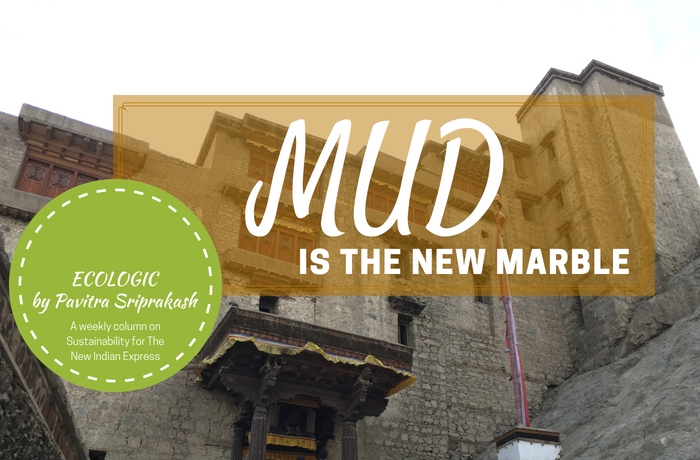21 Jul 18 – Ar Pavitra Sriprakash, Director and Chief Designer, Shilpa Architects Planners Designers Pvt. Ltd. writes a weekly column on Sustainable Living in The New Indian Express. This week’s article explores the changed fads for locally made materials for Construction.
Read full article below or from the New Indian Express site.
Which statement is chicer? ‘This marble is imported from Italy’ or ‘this local slate was quarried on site’. While it was safe to argue that a batch of imported marble was considered design chic a few years ago, the trend if shifting in favour of the local material. Like the idea of food that is ‘farm to table’, I wonder when we will go ‘site to building’ in Architecture. My guess is that this movement is already catching on world over and in no time ‘Eco Chic’ is the only chic there will ever be!
The rating systems are clear — Extra points for regional or local materials are awarded in any system of evaluating a green building. The more local, the better it is from a sustainability standpoint. Which is why my recent trip to the Himalayan foothills in Ladakh was so refreshing. While there are few ‘modern’ buildings which import the construction methodology using RCC and frame structures and try to be conventional there is a vast majority still using locally made bricks of earth the and the traditional wood work and mud plaster techniques on locally quarried stone walls. Closer to home as well, there definitely is a revival in building with earth. More projects today are exploring compressed soil earth blocks and rammed earth techniques.
Mudbrick, also referred to by the Spanish name of ‘Adobe’ which means mud or puddled earth, generally refers to the technique of building with sun-dried mud blocks in either load bearing or non load bearing construction. These were the types of brick widely used in the Ladakhi Region. Stabilising the mud with straw or other fibres is done when the soil mix tends to shrink excessively. Cement and bitumen stabilising is also used for effective strength and waterproofing properties.
Mudbrick has several advantages over conventional bricks or concrete masonry. They include low embodied energy through using local and natural resources with minimal use of manufactured products, High thermal mass and good sound absorption characteristics along with the ability to breathe through the walls. These bricks can also be made from a wide range of soils that can be manufactured on site in various design/colour/surface finishes etc. while providing strength and insulation properties similar to those of concrete or brickwork
Cast Earth (Poured Earth) Construction also called, rammed Earth construction, is a modified and now patented building material which uses a composite which is made up with soil as its bulk component. Generally used in load bearing walls, it can be used to form solid walls without reinforcement. It’s fair to say that rammed earth, as a construction technique, has stood the test of time. It has been used to create buildings around the world whose beauty and robustness are still visible today, like the Alhambra in Spain and the Great Wall of China, both built more than 1,000 years ago. Other historical examples of buildings made of traditional rammed earth can be found in South America, China, India, the Middle East and North Africa.
In the past 30 years a new version of rammed earth has appeared and gained popularity in certain parts of the world, such as Australia, California and Canada. Earth from the site is mixed with water and cement to build walls. Our regional red soil is particularly suited for this type of construction making the idea of ‘Site to Building’ a reality around Chennai. It is happening the world over — mud is the new marble!
As always, feel free to get in touch with Ar Pavitra Sriprakash at studio@shilpaarchitects.com or on her twitter handle @pavisriprakash.



